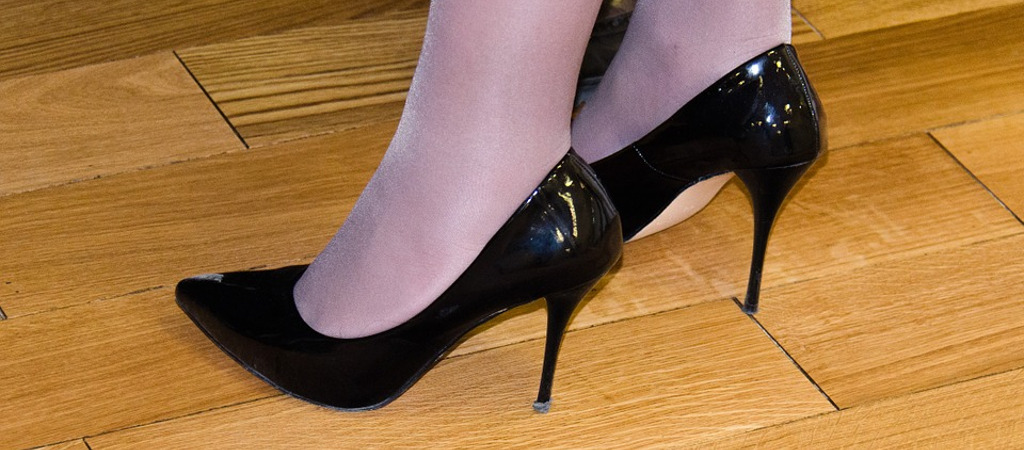Dress codes are jeopardising women’s health, safety and comfort in the workplace.The encumbrance of impractical footwear at work remains overlooked by legislators and company directors, with many companies continuing to force their female employees to wear heels in the workplace.
High heels can cause serious physical complications in addition to posing a health and safety risk. Women’s wellbeing remains threatened by antiquated notions of femininity and formality that seem not to have progressed since women were not allowed to wear trousers in the Western world.
Health complications
In addition to the physical discomfort of working 8 hour (or longer) shifts wearing heels, serious health problems have been linked to extensive wear. The higher the heel, the greater the risk of health problems.
Existing health conditions such as hip and knee pain are often exacerbated by wearing high heels for long periods. Ingrown toenails, blisters and bunions are among the more minor effects caused by wearing high heeled footwear. The Journal of Orthopaedic research found that the lifetime risk of developing osteoarthritis is increased by wearing heels that are 3.5 inches (8.9 cm) or higher. The hips and spine are pushed out of alignment when wearing heels, causing serious damage to the spinal column including Spondylolisthesis (slipped vertebrae) and sciatica.
Inconvenience
It is more taxing to balance in high heels and they are particularly impractical for running around or standing for long periods at work. They represent that discrimination and gender inequality are still rife in many places of work worldwide.
The College of Podiatry found high heels cause pain in 20% of women within 10 minutes of wear. On average, it’s 1 hour 6 minutes and 48 seconds before they hurt. In customer-facing sectors such as retail, hospitality, tourism, employment agencies and corporate services, there is the greatest expectation for women to wear them.
Comparing our rights
In the UK, denying women the right to choose to wear flat shoes has been described as a poor application of the 2010 Equality Act. Despite this, the UK government rejected a petition to adapt the law to prevent employers forcing women to wear high heeled footwear, in March 2017.
The protest was initiated by Nicola Thorp, following her dismissal from PwC in London after refusing to wear high heels. The company has since changed its policy, but British law has not changed. Employment tribunal fees mean far fewer people are making discrimination claims against their employers.
There have been similar cases in Spain of disciplinary action taken against employees, suspended for ‘disobedience’ for failing to comply with uniform regulations that specified heel height. It was only last year that National Heritage Spain changed its policy to allow women to wear flat shoes.
US Federal law requires dress codes to not be more ‘burdensome’ for one gender than the other – a rule that seems to overlook expectations to wear high heels and skirts of a particular length, and to apply makeup regularly.
By contrast, the Canadian province of British Columbia passed legislation this April that bans employers from forcing employees to wear high heels whilst working.
Hypocrisy
Ancient traditions like foot binding are frowned upon today as being oppressive of women. There is an outcry if school or work dress codes specify that only men can wear trousers or sexualise women, yet the fight for the right to choose flat shoes continues. Changes in legislation need to be made to protect women in the workplace from physical discomfort, risk and harm.

